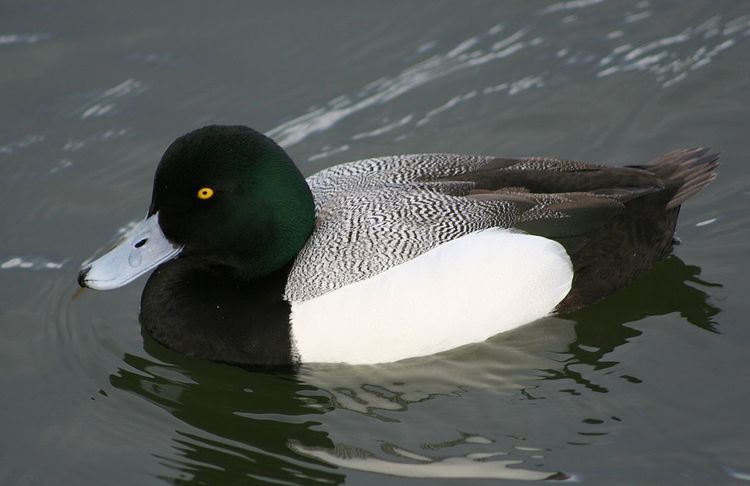 | ||
Layout boat hunting is a sub specialty of traditional waterfowl hunting which is done in a low-profile un-motorized boat made of a unique design to allow hunter to maintain a close position to the water in order to conceal them in open water. This is a sport with a long history going back to market hunters and punt boats mounted with small cannons. The main focus of the layout boat is to put the hunter very close to the decoys if not in them for additional concealment. This makes for very dramatic hunting scenarios where a decoying bird comes extremely close to the hunter and boat.
Most layout boats are used for diver duck or ocean duck hunting where an open deep water waterfowl species frequent. Sometimes they are deployed in marshes for more traditional puddle duck hunting or goose hunting.
Open water layout boat hunters are well known to be a hearty bunch and are known for operating on the riskier side of waterfowl hunting. They are known to target diver ducks such as bluebills (greater scaup), canvasback, goldeneye, scoter and eider to name a few.
Layout boats come in designs such as pumpkin seed, oval, box-like just to name a few. They come in one- and two-man models.
Layout hunters usually deploy large spreads of diver ducks in open water areas. Many successful patterns have been created for these spreads over the years. Some layout hunters will use as many as 300 decoys or more. Layout boats are commonly called "rigs" because the usually require a larger tender boat to do the work of setting up a decoy spread, changing hunter and retrieving downed bird. Tender boats also play a much more important role of watchdog should anything go wrong. Every rig has its own system for setting and retrieving decoys. Some hunters employee long main lines (also called mother lines) with 10 to 20 decoys attached to a single line via short snap ropes. Other hunters use single line decoys with no main line at all. These methods are very effective and all depends how you were mentored into the sport.
Layout boat is positioned very close if not right into the decoy spread making it even harder to distinguish the boat by waterfowl. 1 to 2 hunters lay back flat into the boat hiding themselves from decoying birds. Many times this done on a rotation basis with other hunters working the tender boat. Remarkably small layout (10'-14') boats can weather some rough water very well.
Layout boats derive most of their success from the fact that the hunter is actually partially submerged below the water line. This practice dates back to days in which hunters hunted waterfowl from sunken boxes with only an inch or two above water. This is outlawed in much of the country but the waterfowler answered back with the layout boats.
It should be noted that this is the most dangerous of all the waterfowl hunting techniques and should not be undertaken without the guidance of an experienced layout hunter
